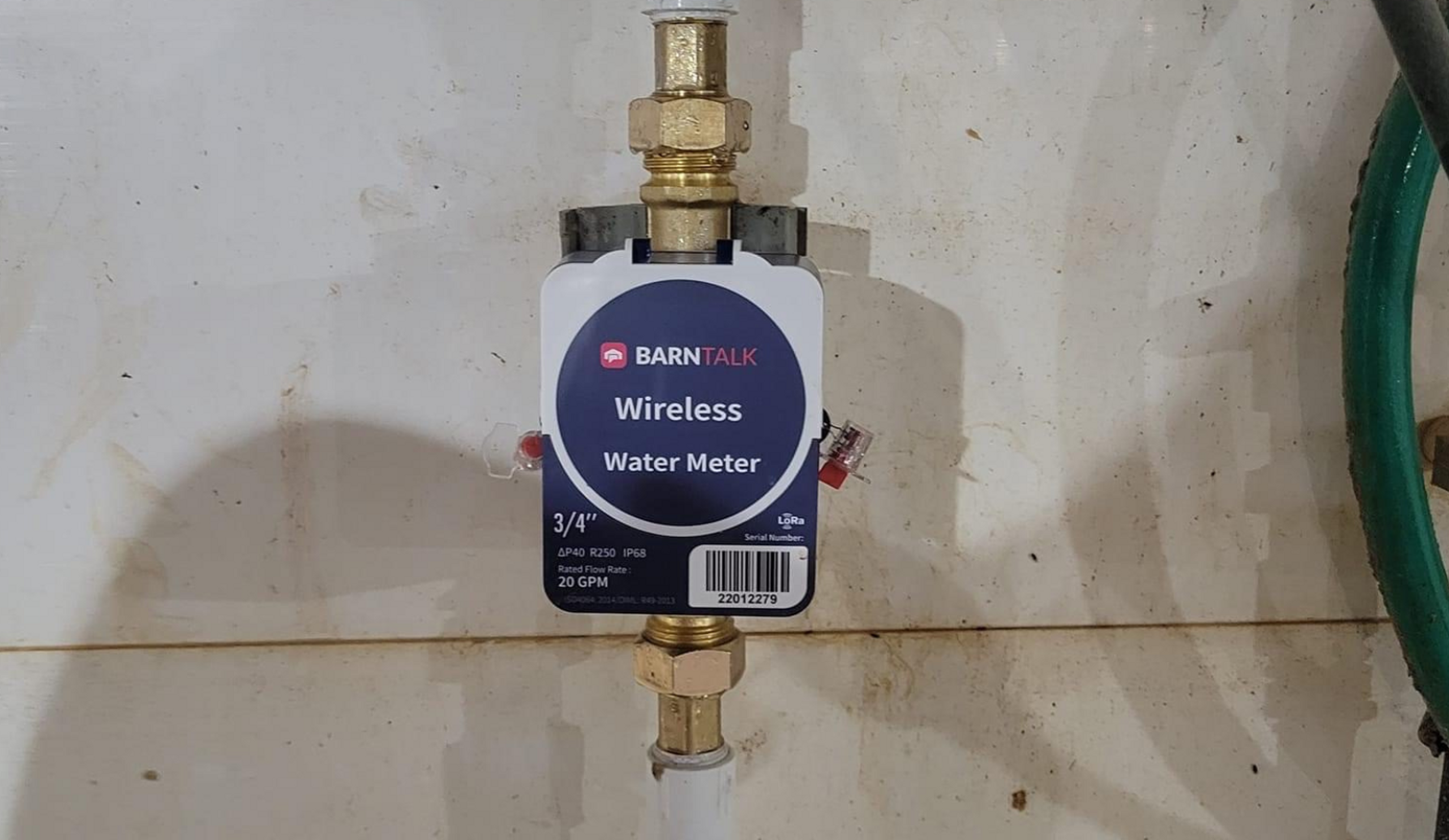Early Detection of Swine and Poultry Illness Starts with Monitoring Water Consumption
June 7, 2022 | Case Studies
Jim Ryken
COO
The health of your animals can change in the blink of an eye. Highly transmissible diseases can strike your barn in an instant, causing the condition of your livestock to go from bad to worse in mere hours.
Early detection is the first step for successfully managing illnesses and disease outbreaks in livestock. What if you could detect a health problem in your herd or flock before they even started showing symptoms?
On March 20, 2022, John Ryken’s site manager noticed his pigs were coughing a lot and mortality was increasing, so he did what he always does: started them on some treatments. The following week, a team of researchers at Iowa State University was reviewing the water consumption data collected through the BarnTalk wireless water meter and noticed a 30% drop in water consumption over 36 hours starting on March 18th. That observation opened the door for the potential of using real-time data to help predict and treat animal illness sooner rather than later.
The significant drop in water occurred in one of three rooms on the farm, indicating that the illness first started in that specific room. The treatments were applied to all the pigs on site. The other two rooms saw less of an impact from the disease, a less significant drop in their water consumption, and returned to “normal” water consumption faster. The outcome indicated that earlier treatments reduce the negative effects of illness.
John’s first sign that there was a health problem with his pigs was their drop in water consumption. Generally, a 3-day decrease in water consumption or a 30% drop in 24 hours are signs of a health challenge in pigs. Consistent with this rule of thumb, John’s pigs also decreased their water intake for a period of three days.
Water Intake as the First Indication of Illness
“Like all of us, when we get sick, we don’t drink and eat. Water stops first,” says Ron Ketchem, general manager of Swine Management Services, LLC.
A drop in water consumption is typically the first indicator of a health problem in pigs, even before changes in feed intake are observed. “Whether it’s a nursery pig or a sow, if they’re not drinking water, they’re not eating.”
Monitoring changes in water consumption can allow producers to detect a health problem in their pigs 24 to 48 hours before other symptoms such as coughing emerge, according to research led by Dr. Mike Brumm, former Extension Swine Specialist at the University of Nebraska. Having this foresight can be the key to preventing an isolated health event from becoming a major disease outbreak across your entire operation.
John’s pigs did not return to consuming normal levels of water until over two weeks after they became sick, raising the point that illness can have long-term impacts on pig health, growth, and your profitability. Along with drinking less water, pigs struck with an illness typically reduce their feed intake, which leads to weight loss or reduced body weight gain – and ultimately lower market value.
Diseases are the number one cause of weight fluctuation in pigs, and the impact they have on live body weight can be detrimental to your bottom line.
Porcine reproductive and respiratory syndrome virus (PRSSV), for example, is the single most expensive disease for U.S. pig farmers, costing the industry $664 million every year, or $5.57 per head.
By monitoring real-time water consumption data, producers can get ahead of diseases before they hurt pig performance and cost their operation.
Stemming Losses with Real-Time Monitoring
Along with detecting sudden decreases and increases in water consumption that would be indicative of a health problem, BarnTalk’s wireless water meter can also have alarms programed to detect no water flow or a large leak such as a burst pipe.
“These alarms are all easy to set and do not require inventory or animal age. They are based on the previous 3 days as a baseline,” says Jim. “Farmers can set them up easily and get information about water faster than ever before.”
Researchers are already working to further advance how producers can detect health challenges in their pigs before they occur by automating water usage data with real-time algorithms.
“Streaming time-series data, such as changes in water consumption, is both a technical challenge and a great opportunity”, says Dr. Brett Ramirez with Iowa State University, who is working on this project in collaboration with colleagues in Statistics.
Dr. Ramirez and his colleagues are aiming to integrate these novel algorithms with platforms, such as the BarnTalk Command Center, to assist producers with earlier detection of potential challenges associated with health and the environment. The real-time algorithms could be used to identify irregularities with equipment that are causing a water leak.
Discovering a health challenge before symptoms even emerge using realtime water consumption data can be the first line of defense against catastrophic death loss within your operation. Getting ahead of illness with a reliable alarm system will help you proactively manage your operation and bring the efficiency of your production to the next level.
Connect with a BarnTalk Expert
Related Resources
Smart Water Use Starts with Intelligent Monitoring
While there are a number of vital nutrients necessary for poultry and swine to thrive, none are as important as water, especially when it comes to overall performance
Stemming Losses with Real-Time Visibility
At any given moment, new problems can arise inside livestock facilities that demand an immediate fix. One minute, everything is running smoothly.
